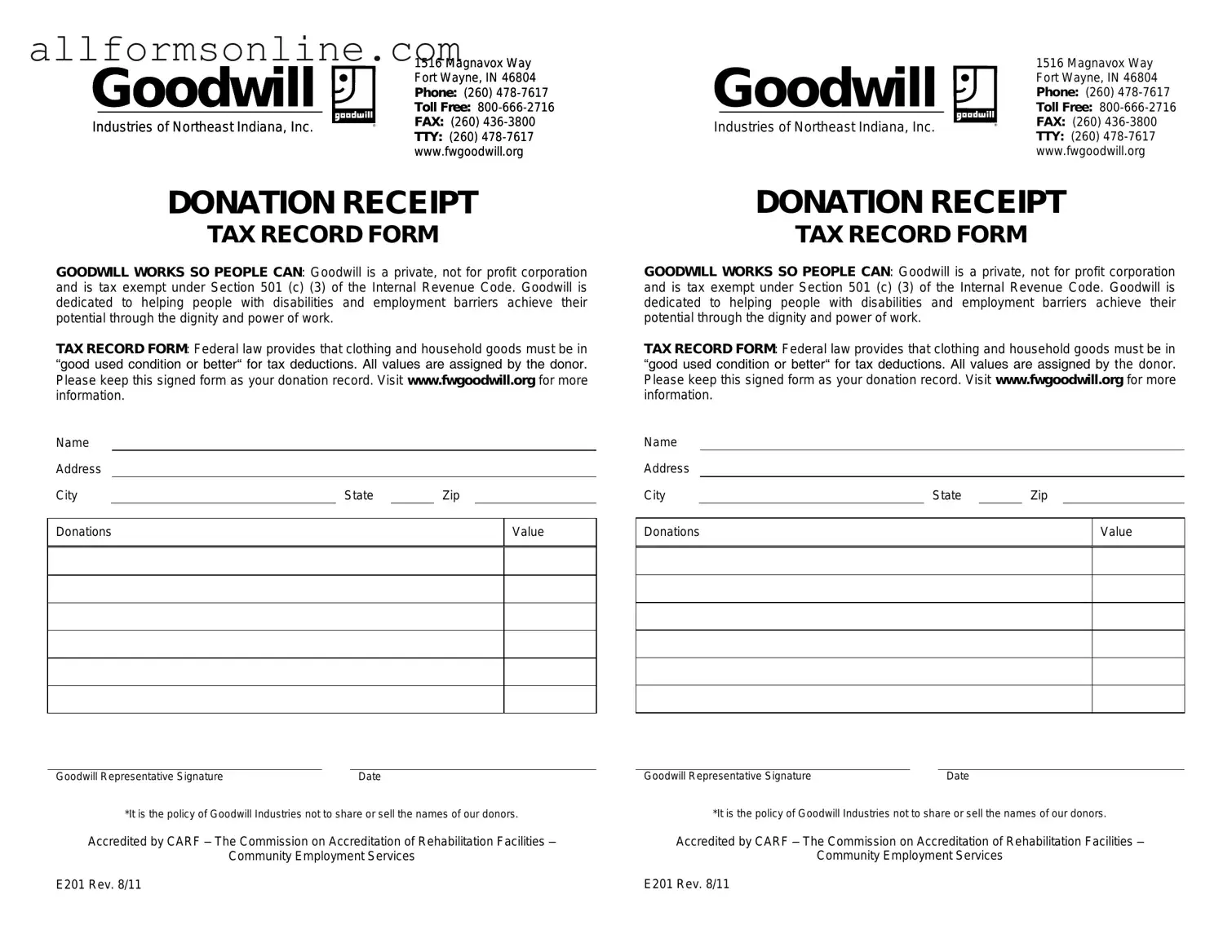What is a Goodwill donation receipt form?
A Goodwill donation receipt form is a document provided by Goodwill Industries to donors who contribute items to their stores or programs. This form serves as proof of your donation, which can be useful for tax purposes. It typically includes details such as the date of the donation, a description of the items donated, and the donor's name and address.
How do I obtain a Goodwill donation receipt?
To obtain a Goodwill donation receipt, simply ask for one at the time of your donation. When you drop off your items, a staff member will usually provide you with a receipt immediately. If you forget to ask, you can still request a receipt by contacting the specific Goodwill location where you made your donation.
Can I claim my Goodwill donations on my taxes?
Yes, you can claim your Goodwill donations on your taxes, provided you have the necessary documentation. The donation receipt acts as proof of your contribution. Make sure to keep it with your tax records. The IRS allows you to deduct the fair market value of the items you donated, so it's important to assess the value of your items accurately.
What information should I include on the receipt?
The receipt should include your name, the date of the donation, a description of the items, and the estimated value of those items. While Goodwill does not assign a specific value, it is your responsibility to determine the fair market value based on the condition and type of items donated.
What if I lose my donation receipt?
If you lose your Goodwill donation receipt, you can contact the Goodwill location where you made the donation. They may be able to provide a duplicate receipt or help you reconstruct the details of your donation. However, keep in mind that it’s always best to keep a copy of your receipts in a safe place for future reference.
Are there limits on how much I can deduct for my donations?
Yes, there are limits on how much you can deduct for charitable donations, including those made to Goodwill. Generally, you can deduct contributions up to 60% of your adjusted gross income, but this can vary based on the type of donation and your tax situation. It’s advisable to consult with a tax professional to understand the specific limits that apply to your situation.
